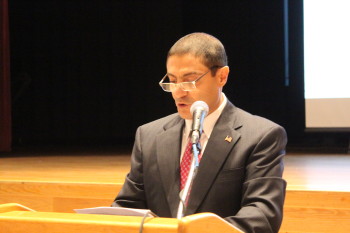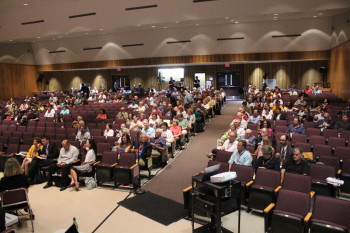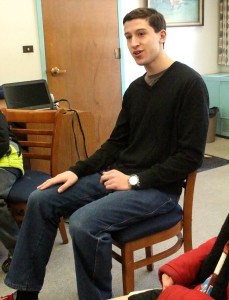Photo: Waverley Square station in Belmont.
Since before the Civil War, Belmont has been home to a pair of stations along the rail lines running through town – one at Belmont Center and the other in Waverley Square – serving commuters and commerce from nearly the beginning of the town’s incorporation.
But that arrangement is under threat as a two-year-old state mandate ordering the MBTA to make one of the stations accessible to the handicap will likely lead the Massachusetts Bay Transportation Authority to close one or both stations and construct a new facility with parking, likely along Pleasant Street.
Belmont has “to contemplate the possibility that we may eventually need to close at least one of our commuter rail stations,” said State Sen. Will Brownsberger in an email to constituents.
The public process on determining the closing and construction of stations will begin soon as the MBTA is preparing to come before the Belmont Board of Selectmen in the near future, according to Brownsberger.
But so far, the Selectmen had yet to receive word from the MBTA on the future of Belmont’s stations.
“All I know is what I read in Will’s note,” said Board Chair Sami Baghdady, after attending the School Committee meeting earlier in the month.
While the MBTA would finance renovations to the existing structure or the creation of a new station, Baghdady said he is prepared to work with the Authority on reaching a final plan that incorporates the community’s concerns and viewpoint.
“We need an open and public process in which many questions will be answered,” said Baghdady.
The MBTA is within its rights to build a station along the rail lines on property it owns without the city or town’s OK, “but I believe they will understand they’ll need to be responsive to the community during the planning phase,” Brownsberger told the Belmontonian on Wednesday, Sept. 16.
No specific location has been advanced for a new station, yet in the past, officials have pointed to the location of the depot for North America Central School Bus at 1000 Pleasant St., within a few hundred feet from Star Market.
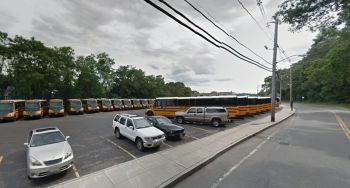
Brownsberger said MBTA management inform him the state’s Architectural Access Board has ordered the transportation authority to improve access to the Waverley Square commuter rail station to allow handicap citizens to take public transportation.
Brownsberger wrote the AAB determined more than two years ago “that recent improvements to Waverley station trigger an obligation to make the station accessible. Under state disability access law, structures can remain inaccessible indefinitely, but if an owner improves a public facility substantially then they need to make it accessible.”
And time is running out for the MBTA to get the job done, originally being told by the state to fix the problem by Jan. 1, 2015.
While the order only applies to the station at Church and Trapelo, the question of inaccessibility will soon be an issue at the Belmont Center station. While there has not been significant improvements at the stop on the commuter rail bridge adjacent to Concord Avenue has not had any improvements that would trigger an overhaul, the MBTA said the station’s platform is falling part and will need to be repaired.
Because of its state is disrepair, “the MBTA expects to need to make investments that would require an accessibility upgrade,” said Brownsberger, noting the cost to upgrade Belmont Center station would be expensive since the stop is on a curve, creating dangerous gaps between the platform and the doors, making accessibility a challenge.
With the estimated cost of bringing the Waverley Station – which lies several dozen feet below the street grade – up to code is estimated at $35 million, and likely just as expensive at Belmont Center, the MBTA is floating an idea that the town had once examined in the 1990s.
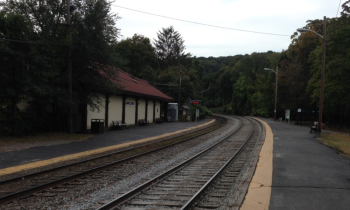
Rather than spend millions on restoring both stations, it would be advantageous for the MBTA to build a modern station at a point along Pleasant Street between Belmont Center and Waverley Square where the tracks are both straight and close to the surrounding grade. A new station could also include parking and could also be combined with development along Pleasant Street, said Brownsberger.
A Pleasant Street Station is not a new idea, said Brownsberger.
“Twenty years ago, I chaired the South Pleasant Street Land Use Committee. We considered the possibility of a new single station to replace the two existing Belmont stations,” said Brownsberger, a plan the committee ultimately recommended against at that time.
A single station, argued the committee, would mean longer walks for many commuters. People were also concerned that a parking lot on Pleasant Street would be used primarily by out-of-town commuters, bringing more traffic to town.
Also, a pedestrian overpass would be needed to allow residents and commuters to access the station from across the tracks within easy walking distance of many Belmont neighborhoods, some kind of pedestrian overpass would be needed, said Brownsberger.
An overpass would bring more foot traffic and probably drop-off vehicles to the areas off Waverley Street between the town field and the town yard — neighborhoods who already feel pressured by traffic from the town yard, the committee concluded.
While there are challenges facing a new station, Brownsberger said that Belmont has “to contemplate the possibility that we may eventually need to close at least one of our commuter rail stations.”
Brownsberger said the MBTA is scheduling a meeting with the Selectmen to “discuss the challenges and options in greater detail and to design an appropriate public process for decision-making.”
“State Rep. [Dave] Rogers and I are committed to assuring the MBTA moves in a deliberate and transparent way on this issue, and we look forward to working with the Board of Selectmen and with all concerned,” said Brownsberger.
“We need to go through a transparent and public process to examine all the potential options,” he said.

